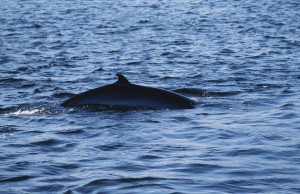
Marine and coastal biological diversity (biodiversity) encompasses the enormous variety of marine and coastal species and their genetic variety, the global ocean’s cornucopia of living resources, myriad coastal and open sea habitats and ecosystems, and the wealth of ecological processes that support all of these. The oceans cover over seventy percent of the planet’s surface area and account for ninety-nine percent of the volume that is known to sustain life. Coastal ecosystems such as estuaries, wetlands and mangrove forests also contain significant diversity and are highly valuable for coastal communities.
Unfortunately, human activities everywhere are depleting marine and coastal living resources and degrading marine and coastal ecosystems in harmful, and sometimes irreversible, ways. In the oceans, as on land, the scope of this depletion and degradation has no precedent in human history. It is generally agreed that such biodiversity loss -the attendant decimation of stocks of living resources, widespread appearance of ecosystem imbalances and the impairment of ecological processes – may well undermine the adaptive potential of those systems and their ability to meet future human needs.
The sea’s vastness and enduring mysteries conceal its inherent vulnerability and the limits of its resources. Oceans are relatively inaccessible to human investigation, and as a result the marine environment is much less understood than is its terrestrial counterpart. Many societies still operate on the implicit assumption that the oceans offer a wealth of limitless resources and possess an infinite capacity for resilience in the face of environmental pressure and change. The mounting evidence that human activities are inflicting serious damage on the oceans demonstrates the fallacy of this assumption. All regions – including polar, temperate and tropical latitudes, and those in both developing and developed countries – face increasing threats to the rich natural heritage of marine and coastal biodiversity that has such great value for humanity.
